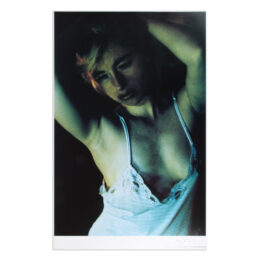

New York photographer, Cindy Sherman, is pre-eminent figure in the 1980’s movement, the ‘Pictures Generation.’ Her ‘socially critical’ photography is an intimate exploration of self-identity that offers critiques of gender, identity and class. Formerly trained as a fine artist, Sherman favoured the immediate nature of photography which allowed her to focus on conceptualisation. She draws inspiration from the 1950s television shows she watched as a child, and also popular culture and film. Her photos capture the heroines of film noir, horror, and psychological drama genres. Her studies are characterised by their confronting, haunting and sometimes grotesque nature.
Over the years, Cindy Sherman has worked in her New York studio, extending her practise to visual forms such as the centrefold, historical portrait and myth, as well as a series involving prosthetics and mannequins in sexualised positions. She progressed from black and white prints, to colour and digital photography, before entering film. In 1997 she directed her first film, Office Killer. She gained attention for her Untitled film stills, dated 1976-1980, a series of portraits, featuring herself in evocative cinematic scenes. Allegedly, the complete collection of 69 Untitled stills were sold to the Museum of Modern Art in New York for $1 million. They also held a retrospective of Sherman’s work in 2012, featuring over 170 works that illustrated the major themes of her career. The social subject matter of her work remains prevalent in contemporary society.